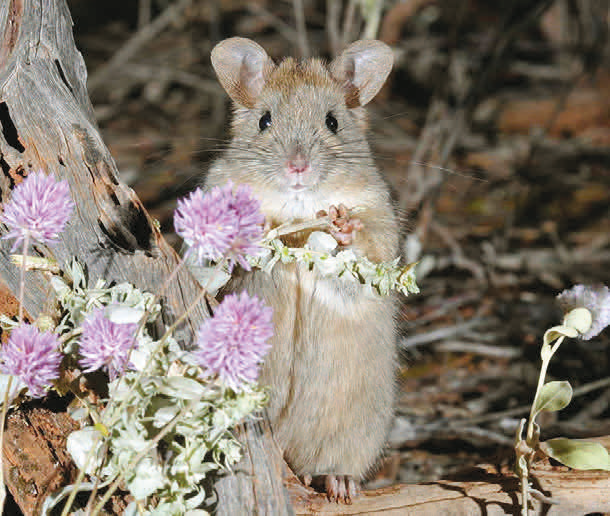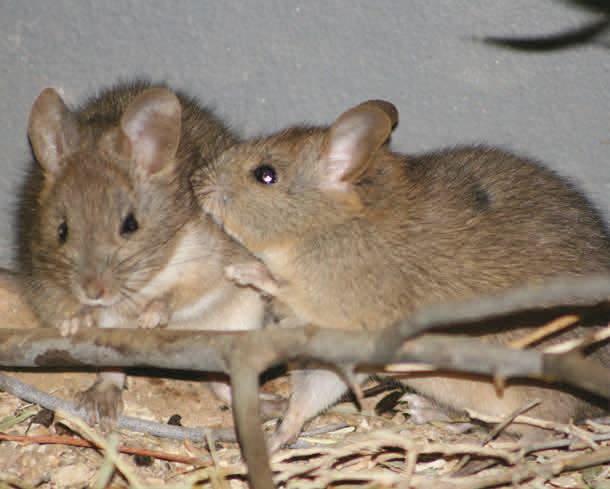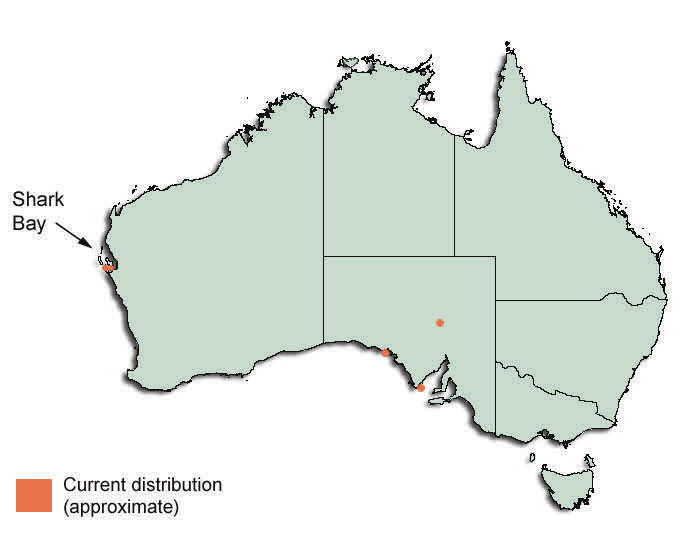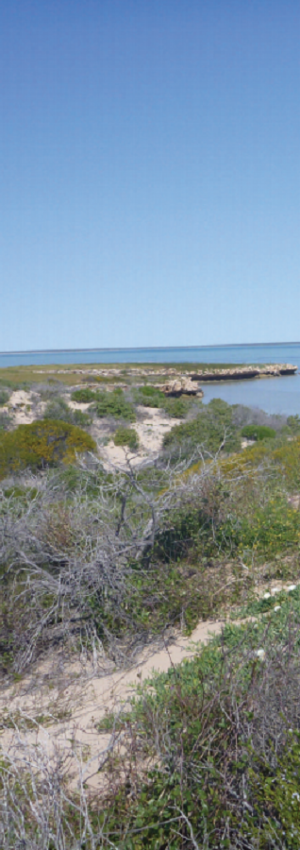Greater Stick-nest Rat
Greater stick-nest rat
Leporillus conditor
Description

| Head-body 170-260mm |
Tail 140-180mm |
Weight 180-450g |
The greater stick-nest rat has fluffy, yellow-brown to grey fur above, and creamy-white fur below. It has a blunt snout and large, rounded ears. The tops of its hind feet have distinctive white markings and its tail is shorter than its body length. The posture of this rodent at rest is hunched, like a rabbit.
Diet and habitat

Greater stick-nest rats inhabit semiarid to arid scrubland with little or no freshwater. They are nocturnal and feed on succulent vegetation and fruits. Groups of 10–20 build and maintain communal nests that can be 1m high and 1.5 metres wide. The name greater stick-nest rat refers to the size their nests can reach.
Breeding

| Gestation 44 days |
No. young 1-4 |
Weaned 4 weeks |
Pairs establish strong bonds and breed throughout the year, but mostly in autumn and winter when there is more food. The young attach themselves to their mother’s teats and are dragged around with her until she deposits them in the nest some time before they are weaned.
Distribution

Greater stick-nest rats were found through south and western arid Australia but became extinct on the mainland in the 1930s. Salutation Island in Shark Bay has a healthy population that originated from a wild population on Franklin Island (SA). This rodent is proposed for reintroduction to Dirk Hartog Island as part of the Return to 1616 project.
Status

Livestock trampling nests leave greater stick-nest rats vulnerable to predation. Along with rabbits, livestock also deplete the stick-nest rat’s food sources.
Fact sheet
SHARK BAY
World Heritage



